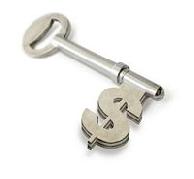
 |
|
| Financial Terms | |
| accelerated depreciation |
|
Information about financial, finance, business, accounting, payroll, inventory, investment, money, inventory control, stock trading, financial advisor, tax advisor, credit.
Main Page: investment, credit, financial advisor, payroll, inventory, money, accounting, tax advisor, Also see related: property, homes, buy home, homebuying, home insurance, condo, financing, homebuyer, home financing, |
Definition of accelerated depreciation
accelerated depreciation(1) The estimated useful life of the fixed asset being depreciated is Accelerated depreciationAny depreciation method that produces larger deductions for depreciation in the Accelerated depreciationAny of several methods that recognize an increased amount
Related Terms:Double-declining-balance depreciationMethod of accelerated depreciation. Flow-through methodThe practice of reporting to shareholders using straight-line depreciation and Sum-of-the-years'-digits depreciationMethod of accelerated depreciation. Declining balanceAn accelerated depreciation method that calculates depreciation each year by applying a fixed rate to the asset’s book (cost–accumulated depreciation) value. depreciation stops when the asset’s book value reaches its salvage value. SUM-OF-THE-YEARS’ DIGITSAn accelerated depreciation method that makes the sum of the digits in an asset’s expected  straight-line depreciationThis depreciation method allocates a uniform Accelerated cost recovery system (ACRS)Schedule of depreciation rates allowed for tax purposes. DepreciationA non-cash expense that provides a source of free cash flow. Amount allocated during the Depreciation tax shieldThe value of the tax write-off on depreciation of plant and equipment. Straight line depreciationAn equal dollar amount of depreciation in each accounting period. DepreciationA technique by which a company recovers the high cost of its plant-and-equipment assets gradually during the number of years they’ll be used in the business. depreciation can be physical, technological, or both. MACRS (Modified Accelerated Cost Recovery System)A depreciation method created by the IRS under the Tax Reform Act of 1986. Companies must use it to depreciate all plant and equipment assets installed after December 31, 1986 (for tax purposes). STRAIGHT-LINE DEPRECIATIONA depreciation method that depreciates an asset the same amount for each year of its estimated DepreciationAn expense that spreads the cost of an asset over its useful life.  Earnings before interest, taxes, depreciation and amortization (EBITDA)The operating profit before deducting interest, tax, depreciation and amortization. Accumulated depreciationA contra-fixed asset account representing the portion of the cost of a fixed asset that has been previously charged to expense. Each fixed asset account will have its own associated accumulated depreciation account. Depreciation expenseAn expense account that represents the portion of the cost of an asset that is being charged to expense during the current period. accumulated depreciationA contra, or offset, account that is coupled depreciationRefers to the generally accepted accounting principle of allocating tax benefit (of depreciation)the amount of depreciation deductible for tax purposes multiplied by the tax rate; tax shield (of depreciation)the amount of depreciation deductible DepreciationReduction in value of fixed or tangible assets over some period Accumulated depreciationThe sum total of all deprecation expense recognized to date DepreciationBoth the decline in value of an asset over time, as well as the gradual depreciation tax shieldReduction in taxes attributable to the depreciation allowance. Modified Accelerated Cost Recovery System (MACRS)depreciation method that allows higher tax deductions in early years and lower deductions later. straight-line depreciationConstant depreciation for each year of the asset’s accounting life. Depreciationa) Of capital stock: decline in the value of capital due to its wearing out or becoming obsolete. Depreciation AllowancesTax deductions that businesses can claim when they spend money on investment goods. DepreciationThe systematic and rational allocation of the cost of property, plant, and equipment Earnings Before Interest, Taxes, Depreciation, and Amortization (EBITDA)An earningsbased measure that, for many, serves as a surrogate for cash flow. Actually consists of working EBDDT - Earnings before depreciation and deferred taxesThis measure is used principally by DepreciationAmortization of fixed assets, such as plant and equipment, so as to allocate the cost over their depreciable life. Related to : financial, finance, business, accounting, payroll, inventory, investment, money, inventory control, stock trading, financial advisor, tax advisor, credit. |